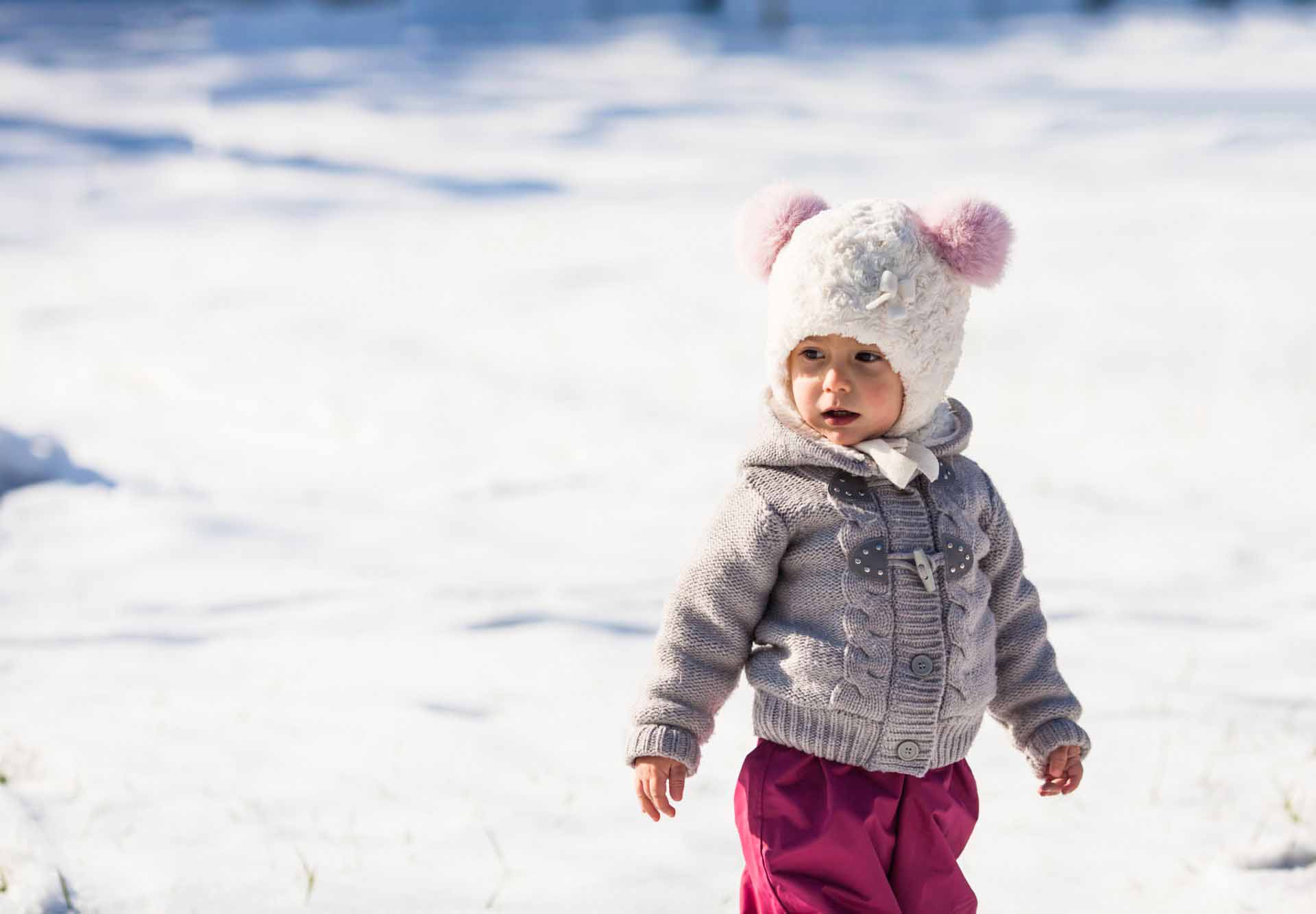These suggestions for baby winter clothes to fight the cold help keep your child warm, safe, and comfortable throughout the chilly season, ensuring they’re protected and cozy.
Whether you’re playing outside, traveling in the car, or remaining indoors, these suggestions for baby girl and boy winter clothing will help you select the ideal ensemble.
Attire for the Car
Specialists advise against attaching bulky coats, bunting, and sleeping bags (or “cozies”) to car seats, as they can compress in a collision, increasing the risk of injury for infants. In any case, the American Academy of Pediatrics considers these products unnecessary.
Instead, what should you do? Dress your infant in thin layers, then apply a blanket after she has been secured in her car seat. You may also purchase a fitted aftermarket cover as long as the car seat manufacturer permits it; no coverings should be placed between the child and the harness straps. For extremely chilly days, Carole Kramer-Arsenault, R.N., suggests layering a long-sleeved one-piece under a footed fleece one-piece. Depending on the weather, a cotton sweater may also be worn.
Employ heavy or many blankets when carrying her in her car seat a few blocks to the vehicle. If you don’t have a blanket, you can also use an older baby’s coat, but the arms must be placed backwards. If your infant appears to be warm after the car has warmed up, remove the blanket or clothing.
Clothing for a Walkabout
Even when it’s frigid, it’s crucial for your kid to be exposed to fresh air. As long as he was born full-term, is at least three weeks old, and weighs at least 12 pounds, a 15- to 30-minute walk while the temperature is at least 25 degrees Fahrenheit will do wonders for both of you, according to Kramer-Arsenault. If your infant is born prematurely or has a medical issue, contact a pediatrician first.
Experts agree that a decent rule of thumb is clothing your child in one more layer than you would in the same conditions, as infants lose heat faster than adults. Thus, if you’re heading out in a long-sleeved T-shirt and a winter coat, add a sweater, bunting, or a coat to your baby’s long-sleeved clothing. Add warm gloves, a cap with a snug fit, and boots if the bunting does not cover his feet. Attachable sleeping bags are suitable for stroller travel (but not during a car ride). Installing a stroller windscreen will aid in protecting your child’s sensitive skin from windburn, but you should avoid going for walks when the wind is biting.
If your infant’s eyes tear up, he becomes fussy, or he begins to cry, you’ll know he’s had enough of winter weather. Likewise, keep an eye out for signs of hypothermia, such as blue lips, shaking, or an especially pale appearance of the nose or ears, and cut your expedition short so you can go to a warm location as soon as possible, advises David Hill, M.D., pediatrician.
Playing Attire for The Snow
It can be a pain to outfit a child of any age for snow play, but that shouldn’t stop your young explorer from enjoying one of winter’s greatest pleasures. Dr. Hill predicts that by the age of six months, even before she can walk, she will be fascinated by snow’s unique texture. The requirements for newborn baby winter garments for snow play put a strong emphasis on remaining dry.
Dr. Hill says that you must have a waterproof snowsuit with attached feet or a snow jacket, plus waterproof pants and boots. Don’t forget a cap and waterproof gloves; however, you can temporarily remove them so your baby can experience the snow with her bare hands. Obviously, you will need to be prepared to swiftly dry and warm them afterward. Also include sunscreen and sunglasses, as snow reflects the sun’s rays.
Dr. Hill does not provide a time restriction for her play, so use your best judgment and bring her inside at the first sign of discomfort.
Clothing for Indoor Activities
You may be tempted to overdress your infant even when you’re indoors, but resist the urge. “The ideal temperature indoors is between 68 and 72 degrees Fahrenheit, and the one-layer-more rule also applies,” explains Kramer-Arsenault. Hence, if you are comfy in two layers, your infant requires three. Put your palm on his stomach or back to tell if he’s too hot or too cold. It should feel warm but not sweaty.
Keeping your baby cool while he sleeps is especially important since overheating can contribute to SIDS (SIDS). Instead of using a blanket, which also increases the risk of sudden infant death syndrome, zip him into a sleep sack or a nicely swaddled receiving blanket that stays below his armpits at bedtime.
If you see indicators of overheating, such as sweating, damp hair, flushed cheeks, and fast breathing, remove a layer of clothes. But there’s no need to check on him every five minutes obsessively: If he’s sleeping deeply, his crib is free of loose bedding, and the temperature is set appropriately, he’s likely fine.
Meaningful articles you might like: How Much Benadryl Should A Child Take, How To Survive Your Child’s First Cold, Tips For Teaching Your Child To Blow Their Nose

